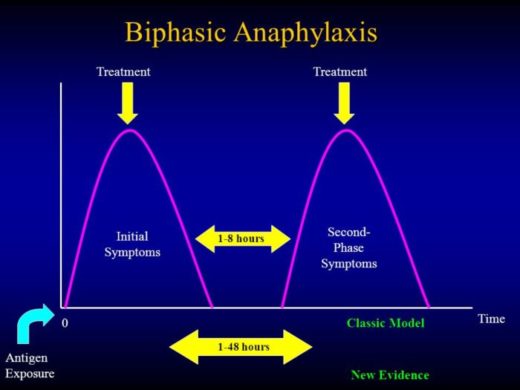This article contains affiliate links. If you make a purchase after clicking on a link I may earn a small commission at no extra cost to you.
What are the “Late Phase After-Effects” of Anaphylaxis?
Even though the immediate signs of anaphylaxis may fade quickly on treatment with epinephrine, there is always a risk of a second, equally life-endangering “late phase” anaphylactictic event occurring within 3 to 12 hours of the first, requiring more epinephrine.
If the second wave follows hard on the heels of the first, it may just appear to be prolonged anaphylaxis.

Corticosteroids such as prednisone may be given, as well as oxygen, bronchodilators to open the airways, fluid replacement to raise blood pressure, blood-pressure-elevating medication and other support measures.
“It is critical that those caring for people with anaphylaxis keep them under observation,” warns one emergency-medicine expert, “as a late or delayed reaction can occur, usually within 6 to 8 hours.” One study found a recurrence in 20 percent of cases.
Therefore, people should be kept under surveillance for 12 hours after an initially severe reaction seems to have cleared. (They may be detained for less time after a milder reaction.) ”
It is equally important after someone has been treated for anaphylaxis,” adds the expert, “not to let him or her leave the emergency unit without knowing the dangers of a repeat occurrence and being told what to do.”
